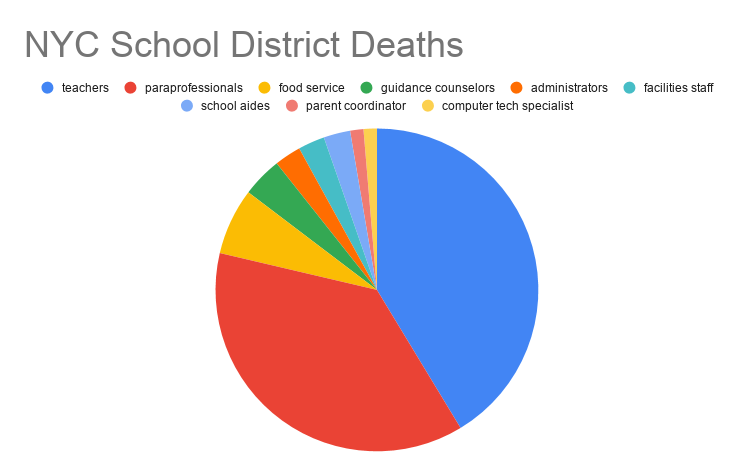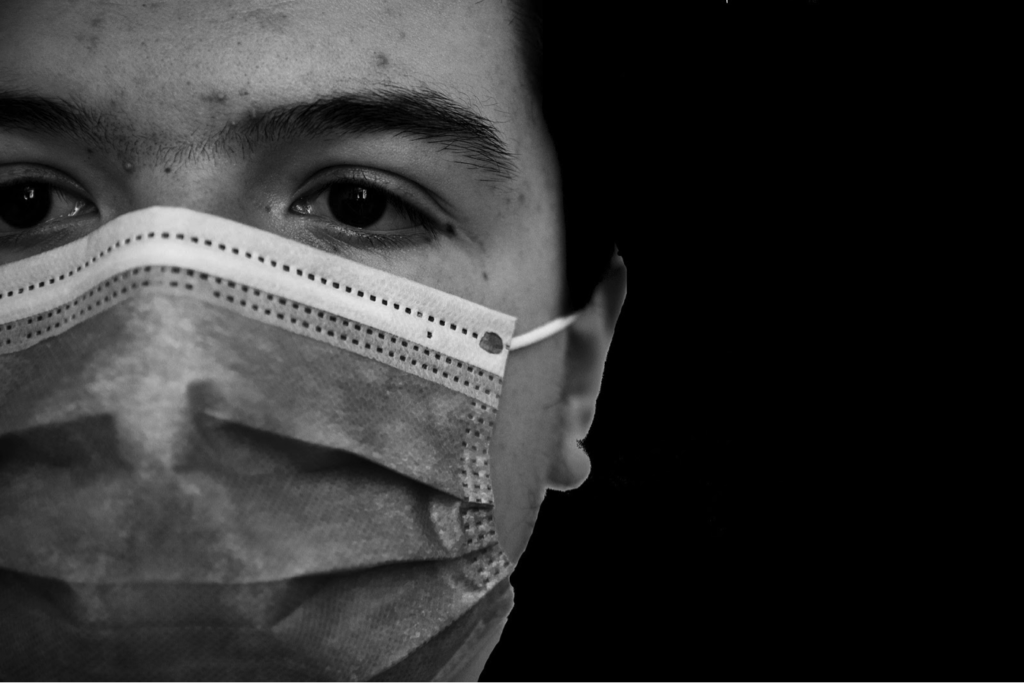This op-ed was written by Janis Bookout, co-founder of Community Resilience Trust, a former teacher and a contributing author at the Austin Common. You can support her work by contributing to her Patreon account.
Articles about the teachers who have died from COVID-19 always seem to include the word, “beloved.” “Beloved Local Teacher Dies of COVID-19.” But I wonder about what is meant by beloved, when, across the country, and especially in the state of Texas, we are ignoring CDC guidelines and returning to what is almost business as usual, even as cases are rising in what will be the “second wave.” Of course, it’s highly likely cases are rising because we reopened college campuses and schools. If you look at Travis County, for example, every time an order is relaxed, cases rise. Every time we tighten up, they fall.
Yet, on November 2, AISD is (under threat of losing their funding) going back to switching classes. Teachers are dying around the country. But it goes beyond teachers. It’s entire school communities at risk, which means our Black and Latinx families are impacted the worst.

As of June 22, the New York City Department of Education reported that 75 of the 79 deaths in New York City Independent School District were working in schools. Of those, 38% were paraprofessionals, and most of them were Black and Brown.
This article from the New York Daily News shared that, “Nearly two thirds of the city’s paraprofessionals are Black and Latino — groups that have died at much higher rates from the coronavirus—compared with about one third of city teachers, the data shows.”
Schools should definitely re-open (to some extent). Some families are desperate for academic and other support services. And the American Pediatric Association says students need social interaction for their mental health. But it also says, do it safely.
TEA, however, is mandating that AISD return to full class schedules for in-person students. This would require switching classes, a practice strongly admonished by CDC, because it increases the potential for exposure to a higher viral load.
While TEA is showing some flexibility, promising rapid COVID testing and allowing for a “hybrid schedule,” this would not address the exposure caused by switching classes and even 50% attendance. And “hybrid schedule” means a lot of parents still have to deal with finding support services the other half of the time.
The CDC’s top recommendation under their guidance for Operational Considerations for Schools makes this clear. It reads, “Ensure the same group of students stay together each day with the same staff/teacher (e.g., no switching classes) as much as possible and limit interaction with other classes, staff, and teachers.”
The default narrative being propagated by some loud groups with political agendas is that parents and teachers are at cross purposes. They are saying “put student mental health first” (as in above school staff and teacher safety). But this is a false dichotomy.
I asked school psychologist Marysa Enis for clarification, and she said, “while it is true that society is currently in the throes of a traumatic event, that does not mean that all children are experiencing feelings of distress. To suggest otherwise (or to use it as a justification for unsafe practices) is misleading at best, and down-right dangerous at worst.” She clarifies that, in fact, about two-thirds of children have experienced at least one traumatic event, and barring other adverse experiences (such as having a disability, limited access to basic needs, or exposure to abuse), most are resilient and return to their “normal” selves with time.
PfISD High School Physics teacher and social justice advocate Cuitlahuac Tonatiuh, who co-hosts the Austin ISD X Podcast with teacher and equity advocate Candace Hunter, says it this way: “They (the governor and TEA) are satisfying the whims of wealthy white people in power by forcing schools to reopen as quickly as possible. Not only is this a blatant attempt to defund education, but its puts people’s lives in danger.”
The danger is real. The Austin ISD dashboard shows that, as of October 18, it has already seen 43 cases of COVID, with an estimated 407 exposures. (Thank you AISD, for your transparency. It matters.) Last week there were 4 new cases, this week there are 11 more. 30 campuses have seen at least one case.
This is not unique to K-12, either. COVID screening for entrance to a UT football game revealed an 8% positivity rate for UT students. Reopening has real impacts. On October 8, UT announced that one of its “behind the scenes” staff had died. Previously, UT said it will likely close this fall if a student dies, but what about the staff?
At least UT has some autonomy in the matter. If school districts in Texas were given local control, they could come up with the creative solutions necessary to take care of all the teacher accommodations while at the same time taking care of student needs and prioritizing low income schools. That’s the kind of thinking school communities do best.
But instead, TEA has mandated that on November 2, schools are to return to business as usual, or lose their funding. Where is our State Health Services on the subject? They have made it clear that TEA is in charge of public health on this matter. TEA, as I understand it, is receiving pressure directly from the Governor’s office, who in turn, is likely hearing it from the DOE.
So now let me pause and ask you, what do we call what is happening here?
If this was coming from an individual, we might call it wrongful death, or “a death caused by the negligent, willful, or wrongful act, neglect, omission, or default of another.” But this impacts whole communities, generations of people. When we use the word “systemic” in front of the word racism, we often use it to mean that racial bias, along with uneven power structure, is woven into the fiber of society, and perpetuated by anyone who participates in it. When the outcome is so much death, what then do we call it?
When, in addition to being disproportionately targeted and killed by police, disproportionately excluded from selective universities, targeted for predatory loans, paid less money for the same jobs, disproportionately criminalized and imprisoned, impacted by displacement, given disproportionately poor healthcare by doctors who don’t look like them, disproportionately represented in medical studies, disproportionately disciplined in school for things like hairstyles…
When, in addition to suffering from higher rates of heart disease, higher stress from chronic trauma, higher rates of pre-existing conditions with less access to healthy food, healthy streets, and quality health care…
When we, having failed to protect communities disproportionately serving in roles on the front line jobs of the pandemic with less protection from companies that choose to ignore CDC recommendations…
…Having ignored the national orders and tolerated evicting people anyway…
…Having offered minimal COVID testing sites in our most Black and Brown communities…
When we then unnecessarily expose Black and Latinx children and communities to COVID, ignoring CDC guidelines and listening to voices of privileged families that want things to “return to normal,” whose children do not represent 75% of the cases of Multisystem Inflammatory Syndrome in Children (MIS-C), and do not live at home in multi-generations.
When we unnecessarily expose paraprofessionals without supporting them with healthcare-level safety training and equipment and sufficient accommodations…
When the state threatens to pull funding based on attendance and test results, or forces districts to execute policies that unnecessarily puts people in harm’s way with higher exposure and the state health authority says they have no authority to stop them from doing so…
What do we call it?
The numbers are people. Of the 222,000 real, living, breathing people with lives and families and goals and dreams and passions and worries and fond memories and beautiful and not-so-beautiful relationships. And according to the CDC, “The largest percentage increases were seen among adults aged 25–44 years and among Hispanic or Latino persons.”
As of August, deaths were 24% (and increasing) Hispanic/Latino and 18% non-Hispanic Black. This compared to population statistics of 18.5% and 13.4%, respectively. When I say, “disproportionate,” I mean that what would otherwise be in the seventy thousands is now in the ninety thousands. The difference in those percentages represent 22,400 Black and Brown people. The 33 paraprofessionals in New York. The growing number of teachers.
The numbers are real people.
So what do we call what is happening here? If I called it “systemic genocide,” I would be called hysterical. But is it not systemic? Is it not generations of death? What do we call the unnecessary death of thousands of people impacted by a system that is set up to disadvantage them, even in (especially in) this pandemic?
We can call it whatever we want, and like systemic racism, we may or may not be able to assign blame to a single person or entity. But we can and must acknowledge that everyone plays a role. It happens by people passing the buck, saying things like “Our budget is limited,” or “Our hands are tied,” or “I’m sorry, that’s just our policy…”
…and then passing down the death sentence in the process.
It happens collectively, through the compliance and participation of every individual in the system. Every decision maker in the chain of command. But also you, me, all of us. If we participate, we are part of the outcome.
What will you do when everyone else is saying their hands are tied?
What will you do when you receive a benefit others don’t?
What will you personally do to ensure that your neighbors’ needs are addressed as much as your own?
What will you do to hold our leaders accountable for doing the hard part of their job?
It’s way too easy to pretend you don’t have a say in the matter of what happens next. It’s a lie we tell ourselves every time. And it’s way too easy to accept the generalities, the narratives as they come to us, the opinions and the armchair analysis. Our brains think talking about things is the same as taking action. It’s not.
The numbers are people. We have to get into the details of what is working and what is not working. How it’s actually impacting people. What actually needs to be done. We need to do the concerted work to look at the evidence and apply the community guidance into real action. Protocols, practices, firings, hirings, exceptions, accommodations, phone calls, requests, promises, money transfers, hell raising conversations, interruptions of meeting agendas, meetings to attend and listen to, rides to offer, collaborations to start, and decisions to reverse.
Love is in the details, and in our actions on behalf of others.
Right now, human love is missing. Where will you exercise yours?



